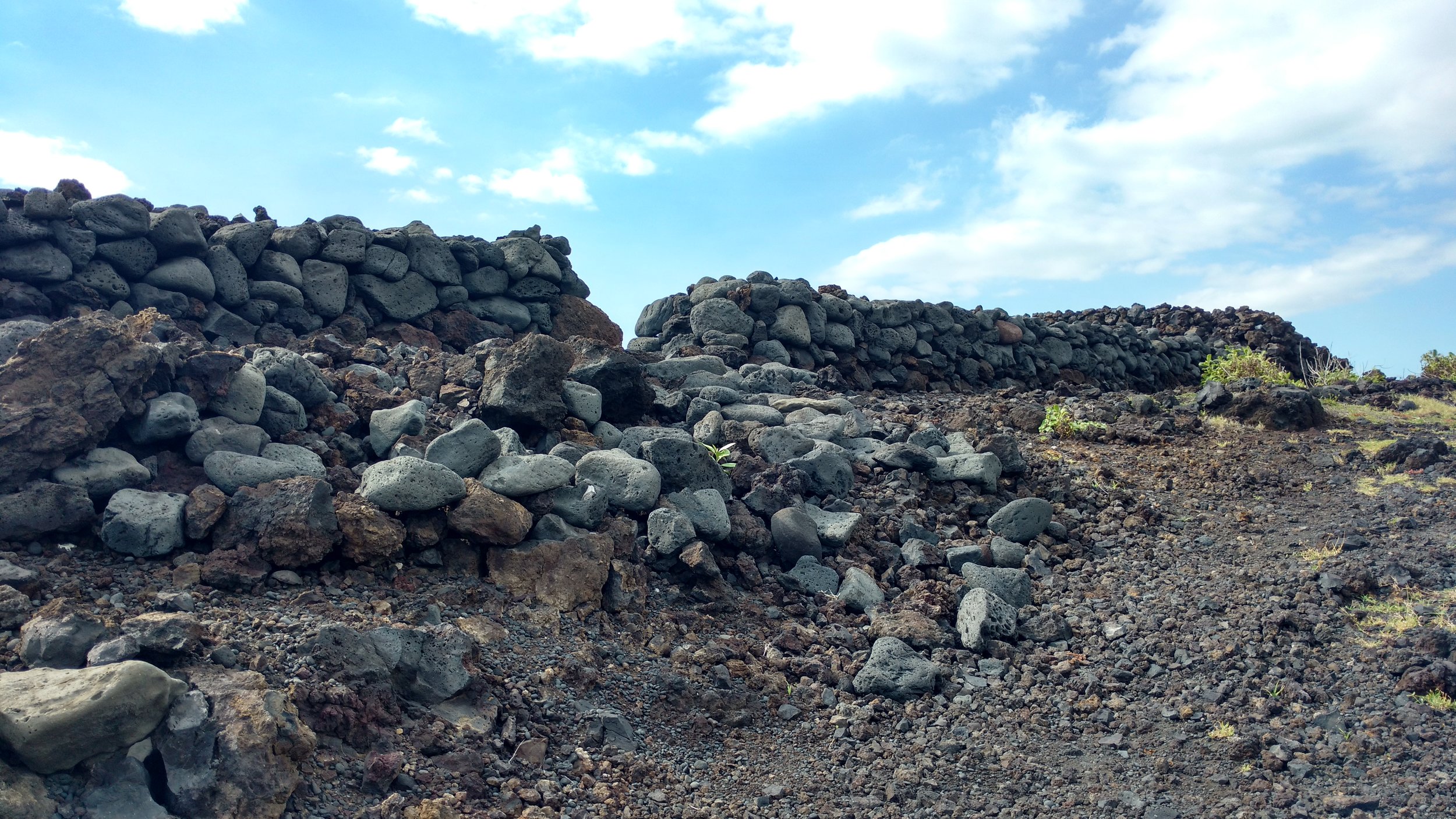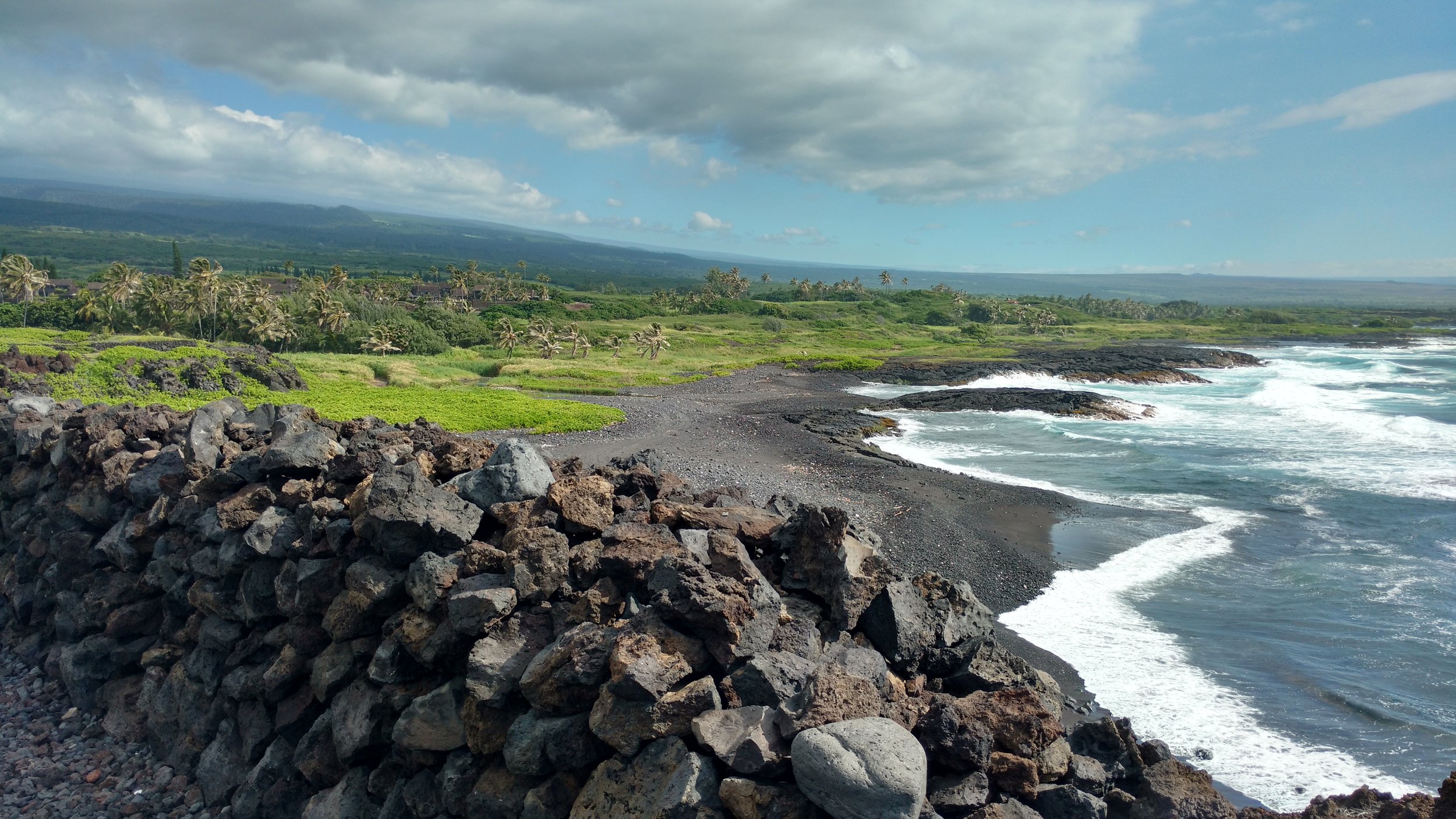The Ñust’as of the Sacred Sites of K`au
In the heart of K`au, largest district of the Big Island of Hawaii, you will find two special mountains nestled in the folds of Mother Mauna Loa, the largest mountain on Earth.
Maka Na`ao is a green flattop whose name means “eye of the belly center,” or what we would call in the Inka tradition “qosqo ñawi.” On the right of Maka Na`ao lies Pu`u Enuhe or ‘caterpillar’ hill. These two mountains are geologic anomalies because they are older than their mother mountain, Mauna Loa. Native Hawaiians schooled in the old knowledge have said they are some of the last peaks of the ancient continent of MU. We affectionately call them MU mountains.
These two peaks overlook two sacred sites, Kawa`a our local surf beach and “place of refuge,” and Punalu`u Black Sand Beach. Kawa`a, the place of forgiveness and enormous heart power is also a temple to the Pleiades which rise over our Island during November, December, January and February the time called Makahiki. This four month period according to Hawaiian tradition, is the time to play games, visit family, when no war or conflict is permitted. It is a time to celebrate peace and prosperity dedicated to LONO the Hawaiian God of agriculture and healing.
My dear brother Kalani Souza, a most amazing Hawaiian Priest (or Kahu), once told me that there are three principal Mo’o Wahine (Water Ñust`as) on the Big Island. One of them resides up in the North at the Fish Ponds at Mauna Lani; the second lives at Miloli`i, still one of the most traditional fishing villages of Big Island, and the third resides at Punalu’u Black Sand Beach. This one is closest to me both in proximity and nearest my heart. My children grew up on this beach playing with the Mother Ocean nearly everyday. This wild beach loved and nurtured our whole family and to this day, if you go there with any worries, you leave without them.
The area, just a few minutes from our farm, is also home to a number of sacred Hawaiian Heiau (temples) that are still active today, and we visit during our trainings



